

Webinars will be live streamed on youtube : https://www.youtube.com/c/eceiisc/
| Upcoming ECE 75 webinars | [Archived webinars link] |
| Speaker | Title | Date | Time | |
|---|---|---|---|---|
| Mr. Murali Babu Muthukrishnan Senior Director Product Development, Ittiam Systems Pvt Ltd |
Video Compression – Challenges and solutions in an increasingly video centric world |
01 April 2022 | 4:00 PM - 5:00 PM IST | |
| TBA |
- | - | - |
| Link to live event. |
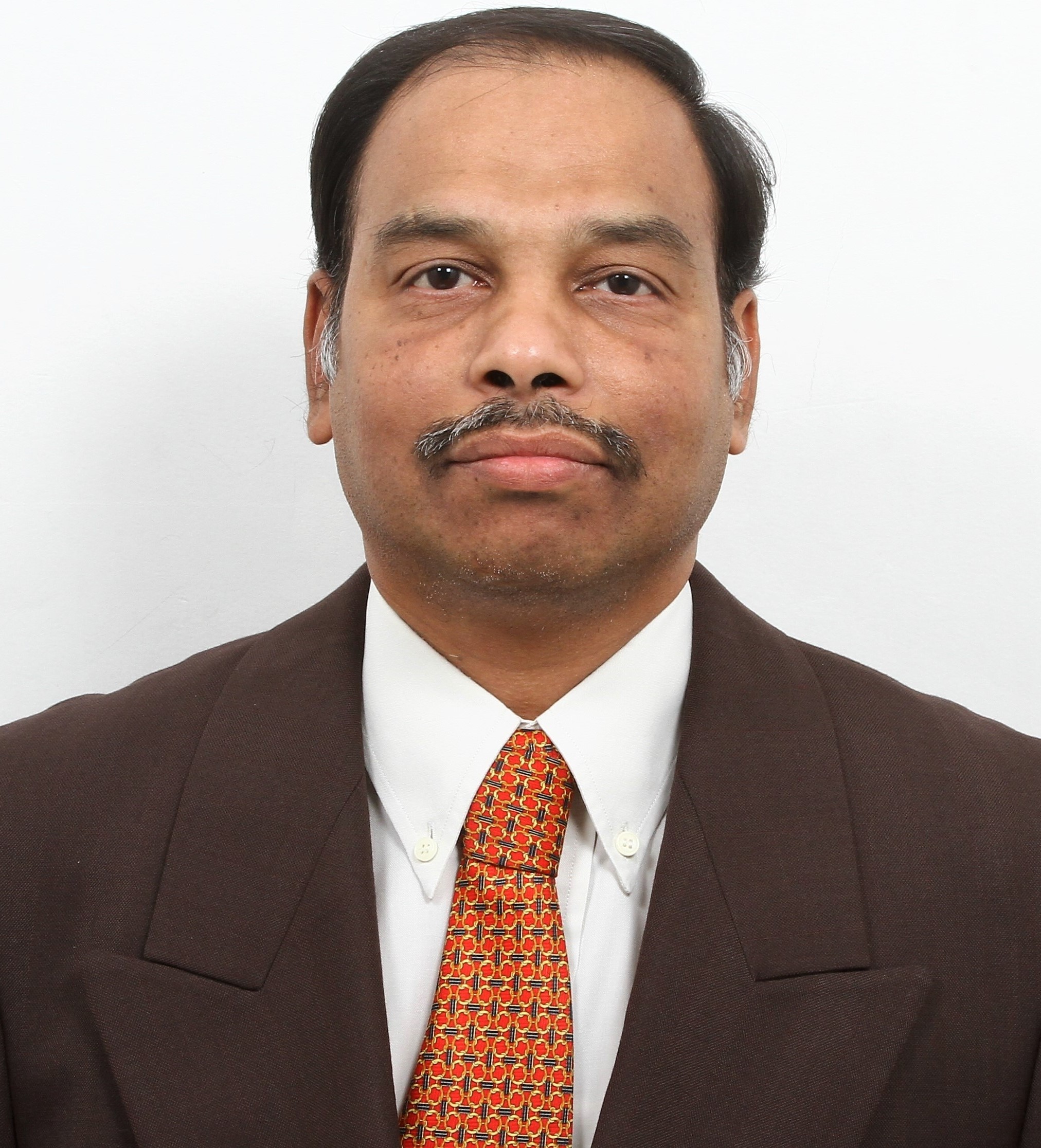
Mr. Murali Babu Muthukrishnan has over 25 years of experience in the field of audio, video, Imaging and associated systems. He has architected, designed, developed and optimized several standards based algorithms like MPEG2, MPEG4, H.264, H.265, WMV9, VC1, VP9 and also Dolby standards, and several standards for audio and speech processing. He has rich experience designing and developing compression technologies on many popular platforms like ARM, DSPs from Texas Instruments and Intel x86. Currently as Senior Director of Product Development, Murali leads a team of engineers focused on developing AI & ML based systems for video analytics. Murali has authored / co-authored eight(8) issued patents in the field of imaging, video and systems. He holds a Master’s degree in Electrical Communication from India Institute of Science.
| Speaker | Title | Date | Time | |
|---|---|---|---|---|
| Shri Tapan Misra Retired Scientist, ISRO | -
The Emergence of Indian Space Industry | 11 March 2022 | 4:00 PM - 5:00 PM | |
| Mr. Manohar Sambandam CEO, Green Robot Machinery Private Limited (GRoboMac) | -
Farm Robotics Technology & Challenges | 18 February 2022 | 4:00 PM - 5:00 PM | |
| Dr. D. V. Giri Dept. of ECE, University of New Mexico, Albuquerque, NM 87131, USA and Pro-Tech, Wellesley, MA USA | -
Therapeutic and Diagnostic Uses of Electromagnetic Energy in Emerging Medical Technologies | 07 January 2022 | 4:00 PM - 5:00 PM | |
| Mr. Krishna Panyam & Dr. Rengarajan Seshadri ATI Motors | -
Autonomous Vehicles - Challenges and Opportunities | 03 December 2021 | 4:00 PM - 5:00 PM | |
| Mr. Raghavan Subramaniyan Chief Technology Officer, AllGoVision, Bangalore |
The Challenge of calibrating Video Surveillance Cameras |
19 November 2021 | 4:00 PM - 5:00 PM | |
| Prof. Rama Chellappa Bloomberg Distinguished Professor in the Departments of Electrical and Computer Engineering and Biomedical Engineering at Johns Hopkins University (JHU). |
Design of Unbiased, Adaptive and Robust AI Systems |
12 November 2021 | 5:30 PM - 6:30 PM | |
| Dr. Prabu Thiagraj Alumnus of ECE, IISc and currently, he is working for the digital signal processing lab at RRI, also in charge of the Gauribidanur radio astronomy observatory. |
We are building the world's largest and most sensitive radio telescope - the Square Kilometre Array |
29 October 2021 | 4:00 pm - 5:00 pm | |
| Mr. Sundarrajan Rangachari Principal Digital Design Architect, Texas Instruments, Bangalore, Karnataka, India |
Scenario aware scalable digital architectures for communication systems |
22 October 2021 | 4:00 pm - 5:00 pm | |
| Dr. Venkata Vanukuru Global Foundries, Bangalore, Karnataka, India |
Innovative Passive Devices for High Performance RF/mmWave ICs |
01 October 2021 | 4:00 pm - 5:00 pm | |
| Dr. Aloknath De (Senior Vice President and Chief Technology Officer of Samsung R&D India, Bangalore) |
Corporate and Startup: A Symbiotic Relationship |
17 September 2021 | 4:00 pm - 5:00 pm |
Prof. Vaidyanathan is the Kiyo and Eiko Tomiyasu Professor of Electrical Engineering at the California Institute of Technology where he has been on the faculty since 1983. He also served as the department head for the period 2002-2005. He has authored more than 500 papers in the areas of digital signal processing and communications, and several of his papers have received prizes from the IEEE. He is the author/coauthor of the four books, and a Life Fellow of the IEEE. Some of his recognitions include the F. E. Terman Award of the American Society for Engineering Education, the IEEE CAS Society's Golden Jubilee Medal, and several awards for excellence in teaching at the California Institute of Technology, including the Northrop-Grumman prize for excellence in teaching. He has also received the IEEE Signal Processing Society's Technical Achievement Award, Education Award, and the “Society Award”. He received the IEEE Gustav Robert Kirchhoff Award (an IEEE Technical Field Award) in 2016, for “Fundamental contributions to digital signal processing.” He was elected to the U.S. National Academy of Engineering in 2019.
Abstract: The great mathematician Srinivasa Ramanujan introduced a summation in 1918, today called the Ramanujan-sum. For many years this summation was used by mathematicians to prove important results in number theory. In recent years, some researchers have found applications of this sum in digital signal processing, especially in identifying periodic components of signals buried in noise. In our recent work we have generalized the Ramanujan-sum decomposition in several directions, and this has opened up some new theory as well as applications. Many beautiful properties are enjoyed by the new representations, thanks to the genius and vision of Ramanujan. In this talk we briefly talk about Ramanujan as a person and then give an overview of the new developments. Applications in the study of DNA and protein sequences will be presented among others.
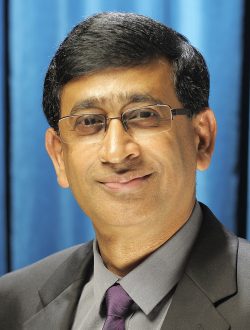
Prof. Goutam Chattopadhyay (S’93-M’99-SM’01-F’11) is a Senior Research Scientist at the NASA’s Jet Propulsion Laboratory, California Institute of Technology, a Visiting Associate at the Division of Physics, Mathematics, and Astronomy at the California Institute of Technology, Pasadena, USA, BEL Distinguished Chair Professor at the Indian Institute of Science, Bangalore, India, and an Adjunct Professor at the Indian Institute of Technology, Kharagpur, India. He received the Ph.D. degree in electrical engineering from the California Institute of Technology (Caltech), Pasadena, in 2000. He is a Fellow of IEEE (USA) and IETE (India) and an IEEE Distinguished Lecturer.His research interests include microwave, millimeter-wave, and terahertz receiver systems and radars, and development of space instruments for the search for life beyond Earth.
He has more than 300 publications in international journals and conferences and holds more than fifteen patents. He also received more than 35 NASA technical achievement and new technology invention awards. He received the IEEE Region 6 Engineer of the Year Award in 2018, Distinguished Alumni Award from the Indian Institute of Engineering Science and Technology (IIEST), India in 2017. He was the recipient of the best journal paper award in 2013 by IEEE Transactions on Terahertz Science and Technology, best paper award for antenna design and applications at the European Antennas and Propagation conference (EuCAP) in 2017, and IETE Prof. S. N. Mitra Memorial Award in 2014.
Abstract: NASA’s Jet Propulsion Laboratory, which completed eighty years of its existence in 2016, builds instruments for NASA missions. Exploring the universe and our own planet Earth from space has been the mission of NASA. Robotics missions such as Voyager, which continues to go beyond our solar system, missions to Mars and other planets, exploring the stars and galaxies for astrophysics missions.
Fundamental science questions drives the selection of NASA missions and innovative instrument development. We design and build instruments to make measurements that can answer those science questions. In this presentation, we will present an overview of the state of the art instruments that we are currently developing and layout the details of the science questions they will try to answer. Rapid progress on multiple fronts, such as commercial software for component and device modeling, low-loss circuits and interconnect technologies, cell phone technologies, and submicron scale lithographic techniques are making it possible for us to design and develop smart, low-power yet very powerful instruments that can even fit in a SmallSat or CubeSat. We will also discuss the challenges of the future generation instruments in addressing the needs for critical scientific applications.
The research described herein was carried out at the Jet Propulsion Laboratory, California Institute of Technology, Pasadena, California, USA, under contract with National Aeronautics and Space Administration.
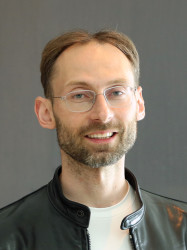
Michael Bronstein is a professor at Imperial College London, where he holds the Chair in Machine Learning and Pattern Recognition, and Head of Graph Learning Research at Twitter. He also heads ML research in Project CETI, a TED Audacious Prize winning collaboration aimed at understanding the communication of sperm whales. Michael received his PhD from the Technion in 2007. He has held visiting appointments at Stanford, MIT, Harvard, and Tel Aviv University, and has also been affiliated with three Institutes for Advanced Study (at TU Munich as a Rudolf Diesel Fellow (2017-2019), at Harvard as a Radcliffe fellow (2017-2018), and at Princeton as visitor (2020)). Michael is the recipient of five ERC grants, two Google Faculty Research Awards, and two Amazon AWS ML Research Awards. He is a Member of the Academia Europaea, Fellow of IEEE, IAPR, and ELLIS, ACM Distinguished Speaker, and World Economic Forum Young Scientist. In addition to his academic career, Michael is a serial entrepreneur and founder of multiple startup companies, including Novafora, Invision (acquired by Intel in 2012), Videocites, and Fabula AI (acquired by Twitter in 2019). He has previously served as Principal Engineer at Intel Perceptual Computing and was one of the key developers of the Intel RealSense technology.
Abstract: Geometric deep learning has recently become one of the hottest topics in machine learning, with its particular instance, graph neural networks, being used in a broad spectrum of applications ranging from 3D computer vision and graphics to high energy physics and drug design. Despite the promise and a series of success stories of geometric deep learning methods, we have not witnessed so far anything close to the smashing success convolutional networks have had in computer vision. In this talk, I will outline my views on the possible reasons and how the field could progress in the next few years.

Kausik Majumdar holds a Ph.D. in Electrical Communication Engineering from Indian Institute of Science (2007 – 2011), an M.Tech. in Optoelectronics and Optical Communication from Indian Institute of Technology Delhi (2003-2005) and a B.E. in Electronics and Tele-Communication Engineering from Jadavpur University (1999-2003). Before joining as an Assistant Professor at the Department of Electrical Communication Engineering in Indian Institute of Science in January 2015, Kausik was working as an Emerging Technology Research Scientist at SEMATECH, Albany, USA (2011 – 2014). Earlier, he worked as a Product Engineer at Magma Design Automation, Bangalore, India, (July 2005 – Dec 2006).
Research overview:
Kausik leads the Quantum Electronics Laboratory at the ECE department in IISc. His research group uses a combination of theoretical and experimental techniques to investigate the electrical and optoelectronic properties of low dimensional materials and their nanostructures. The research group is also equally interested in applying these fascinating properties to develop novel devices, encompassing the entire spectrum of device design and simulation, device fabrication using state of the art semiconductor fabrication techniques, and device characterization using various electrical, optical and spectroscopic techniques.
Expertise :
Semiconductor Device Physics, Nanoelectronic and Optoelectronic Devices, Light Matter Interaction at Nanoscale, Quantum Technologies.
Abstract :Van der Waals (vdW) heterojunctions are attractive because of their atomically sharp interface, gate tunability, and strong electro-optical activity. Their robustness against lattice mismatch between the successive layers allows possible integration with dissimilar materials and of varying dimensionality. In this talk, our recent results on stacking heterogeneous materials to obtain new electronic and optoelectronic functionalities will be discussed. As specific examples, the demonstration of a robust van der Waals Esaki diode with large peak-to-valley current ratio, and its versatility as a voltage-controlled oscillator and as a one-bit memory will be discussed. Heterogeneous integration of a 1D tellurium nanowire channel with hBN gate dielectric will be discussed as a high-performance, double-gated, contact-barrier-free, junctionless transistor. Finally, the demonstration of strong quantum-confined Stark effect (QCSE) will be discussed in monolayer and bilayer semiconducting systems, and the impact of reflection symmetry breaking will be emphasized in tuning the nature of QCSE.
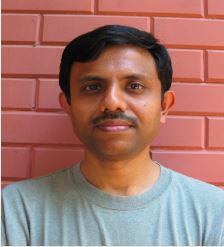
Neelesh B. Mehta is a Professor in the Department of Electrical Communication Engineering at the Indian Institute of Science (IISc), Bangalore. His research focuses on wireless communications. He works on 3G/4G/5G cellular communication systems, energy harvesting sensor networks, cognitive radio, cooperative communications, multi-antenna technologies, and multiple access protocols.
He is a Fellow of the IEEE, Indian National Science Academy (INSA), Indian National Academy of Engineering (INAE), and National Academy of Sciences India (NASI). He is a recipient of the IIT Roorkee’s Khosla National Award in Engineering, Shanti Swarup Bhatnagar Award, Hari Om Ashram Prerit Vikram Sarabhai Research Award, DST-Swarnajayanti Fellowship, and NASI-Scopus Young Scientist Award. He currently serves on the Steering Committee of the IEEE Transactions on Wireless Communications and on the IEEE ComSoc Awards committee. He served on the Executive Editorial Committee of the IEEE Transactions on Wireless Communications during 2014-17 and was its Chair during 2017-18. He served on the Board of Governors of the IEEE Communications Society from 2012-15.
Abstract: For the binary hypothesis testing problem, the ordered transmissions scheme (OTS) requires fewer sensor nodes to transmit their measurements than the conventional unordered transmissions scheme (UTS) in which all nodes transmit. Despite this benefit, OTS achieves the same optimal error probability as UTS. For the practically relevant, yet less explored, scenario in which the sensor nodes’ measurements are spatially correlated, we present a novel correlation-aware ordered transmissions scheme (CA-OTS). CA-OTS uses the timer scheme to make the nodes transmit their measurements in the decreasing order of the absolute values of their measurements without any node knowing the measurements of other nodes. CA-OTS applies to the general case where the hypotheses differ in the mean vector and covariance matrix.
We then address the challenge of missing transmissions that can corrupt the order of transmissions. Such a scenario arises, for example, when the sensor nodes are energy harvesting. The randomness in the energy harvested and consumed can cause a sensor node to be unable to transmit due to a lack of sufficient energy. In this scenario, we show that OTS reduces not only the number of transmissions but also the error probability. It outperforms the conventional UTS scheme and sequential detection for a wide range of parameters.
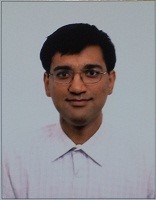
Arun Kumar Sridharan, Ph.D is a senior engineer at General Electric in Bangalore. At GE, he developed state-of-the-art, laser-based, real-time, gas and temperature sensors for GE’s gas turbine and coal-boiler based power plants. These sensors were designed at the John F. Welch Technology Centre and piloted at GE test facilities & customer plants to help them operate more flexibly and reduce emissions. He has also worked on digital applications for emissions predictions and communication protocol adapters. Before coming to GE in 2013, Arun was a staff-physicist in the National Ignition Facility at the Lawrence Livermore National Laboratory. At LLNL, Arun conducted innovative R&D on fiber lasers and amplifiers and optical metrology. In 2013, his work on ribbon fiber amplifiers was selected as one of the top 100 innovations of the year by R&D 100 magazine. Arun completed his M.S/Ph.D in Electrical Engineering at Stanford University under the guidance of Robert L. Byer in 2006. His doctorate thesis focused on solid-state lasers and non-linear optical devices for remote wind sensing applications. Arun completed his B.S. in Physics and Computer Science, Summa Cum Laude, at Brandeis University in 1997.
Abstract: The talk will begin with a review of the tremendous cost-reduction achieved by renewable power sources in the last decade and its implications for fossil-fuel power plants. I will then discuss different energy-storage technologies and discuss how GE’s gas turbines and coal-fired boilers will increasingly play a secondary role of augmenting renewable power sources. These fossil-fuel plants will progressively burn more and more H2 and less natural gas. They will also need to operate with many more starts and stops each year. To operate in this new way while maintaining the maximum possible efficiency and emissions compliance is a challenge. I will then discuss our research in sensor & software-based strategies to address these challenges.
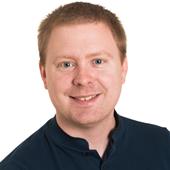
Emil Björnson received the M.S. degree in Engineering Mathematics from Lund University, Sweden, in 2007. He received the Ph.D. degree in Telecommunications from KTH Royal Institute of Technology, Sweden, in 2011. From 2012 to mid-2014, he was a joint postdoc at the Alcatel-Lucent Chair on Flexible Radio, SUPELEC, France, and at KTH. He joined Linköping University, Sweden, in 2014 and is currently Associate Professor and Docent at the Division of Communication Systems. He teaches Master level courses on communications and is responsible for the Master programme in Communication Systems.
He performs research on MIMO communications, radio resource allocation, machine learning for communications, energy-efficient communications, and future network design. He is on the editorial board of the IEEE Transactions on Communications (since 2017) and the IEEE Transactions on Green Communications and Networking (since 2016). He is the first author of the textbooks “Massive MIMO Networks: Spectral, Energy, and Hardware Efficiency” (2017) and “Optimal Resource Allocation in Coordinated Multi-Cell Systems” (2013). He is dedicated to reproducible research and has made a large amount of simulation code publicly available.
Dr. Björnson has performed MIMO research for more than ten years and has filed more than ten related patent applications. He received the 2019 IEEE Communications Society Fred W. Ellersick Prize, the 2019 EURASIP Early Career Award, the 2018 IEEE Marconi Prize Paper Award in Wireless Communications, the 2016 Best PhD Award from EURASIP, the 2015 Ingvar Carlsson Award, and the 2014 Outstanding Young Researcher Award from IEEE ComSoc EMEA. He also co-authored papers that received best paper awards at the conferences WCSP 2017, IEEE ICC 2015, IEEE WCNC 2014, IEEE SAM 2014, IEEE CAMSAP 2011, and WCSP 2009.
Abstract: Wireless connectivity is becoming as essential as electricity in our modern world. Although we would like to deliver wireless broadband services everywhere, the underlying physics makes it inherently complicated: the signal power vanishes very quickly with the propagation distance and is absorbed or scattered when interacting with objects in the way. Even when we have a “strong" signal, only one in a million parts of the signal energy is being received, thus, there is a huge room for improvements!
What if we could tune the propagation environment to our needs? This is the main goal of reconfigurable intelligent surfaces, which is an emerging concept for beyond-5G communications. The idea is to support the transmission from a source to a destination by deploying so-called metasurfaces that can reconfigure how incident signal waves are scattered. These surfaces can be electronically configured to interact with the wireless signals as if they had different shapes. For example, it can be configured to behave as a parabolic reflector that is perfectly rotated to gather signal energy and re-radiates it as a beam focused on the receiver. This feature makes use of a new design dimension: we can not only optimize the transmitter and receiver but also control the channel. This might be a game-changer when communicating at mmWave and THz frequencies, where the traditional propagation conditions are particularly cumbersome.
This might sound like science fiction but is theoretically possible. In this talk, I will explain the fundamentals of this new technology from a signal processing perspective. By deriving a signals-and-systems description, we can look beyond the initial hype and understand what is actually happening when using reconfigurable intelligent surfaces. I will cover the basic modeling and its practical limitations. The talk will culminate in the description of two major challenges that need to be tackled by the research community.
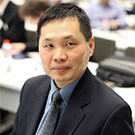
Boon S. Ooi is a Professor of Electrical and Computer Engineering at KAUST. Ooi received the Ph.D. degree in electronics and electrical engineering from the University of Glasgow (Scotland, U.K). He has served as faculty at Nanyang Technological University (Singapore) and Lehigh University (Pennsylvania, USA). His research interest includes the study of III-Nitride based materials and devices, distributed fiber sensors, visible light communication (LiFi) and underwater optical communication. He has served on the technical program committee or organizing committees of CLEO, OFC, PW, IPC, ISLC and IEDM. He is Senior Editor of IEEE Photonics Journal and Associate Editor of Optics Express. Ooi is a Fellow of the U.S. National Academy of Inventors (NAI), OSA, SPIE and IoP (UK).
Abstract: Visible light communication (VLC or LiFi) has been a topic of intense research after the idea was proposed in 2011. To date, a data rate of multiple 100s Mbps has been demonstrated using LED as light source. At KAUST, we are developing the next generation of SSL lighting using visible laser diodes (LDs). Laser diodes do not suffer efficiency droop at high current densities. This allows for the design of lamps using a single, small footprint, light-emitting chip operating at high current densities. In this talk, I will focus on the recent progress of visible diode LD-based VLC technology. High-speed optoelectronics and communication systems for multiple Gbps VLC links will be discussed.
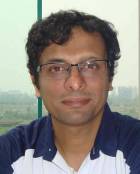
Chandra R. Murthy is a Professor in the department of Electrical Communication Engineering at the Indian Institute of Science, Bangalore, India. His research interests are in the areas of multiuser MIMO systems, 5G/6G communications, and sparse signal recovery techniques applied to wireless communications.
Abstract: Massive machine-type communication (MMTC) services are expected to be an integral part of fifth-generation wireless systems. A typical MMTC scenario serves a large number of users who sporadically send short packets to an access point or base station. Grant-free random access (RA) based non-orthogonal multiple access (NOMA) schemes have the advantage of requiring very low coordination and signaling overhead for such users. We exploit the sparse characteristics of MMTC and use compressive sensing (CS) approaches for detecting the active users in each frame. As the underlying multiple access scheme, we explore a successive interference cancellation (SIC) based RA protocol known as irregular repetition slotted ALOHA (IRSA). We analyze the performance of IRSA under (a) practical channel estimation, (b) an SINR based packet capture model, (c) multiple antenna base stations, and assess their effect on the achievable throughput. We will see that the completely distributed nature of the protocol, relatively low decoding complexity, and high throughput achieved makes IRSA a very promising candidate for MMTC applications. We conclude with discussing some critical challenges and potential ways to overcome them.
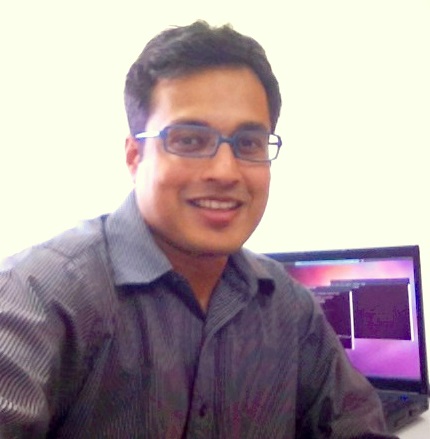
Dipanjan Gope PhD, is Associate Professor in Electrical Communication Engineering at Indian Institute of Science, Bangalore. He is also co-founder and CEO at Simyog Technology Pvt. Ltd. a spin-off from IISc focused on Design and Sign-off tools for Automotive Electronics. His research interests lie in the areas of Computational Electromagnetics and Electronic Design Automation. Dr. Gope is a founding member at Nimbic (acquired by Mentor Graphics) a spin-off from University of Washington, Seattle. He received his PhD and M.S. degrees in Electrical Engineering from the University of Washington, Seattle and BTech in Electronics and Electrical Communication Engineering from the Indian Institute of Technology, Kharagpur.
Abstract: EMI/EMC failures contribute to around 30% of the failures in the verification stage costing the electronics industry billions in lost revenue. Today, in general, EMI/EMC compliance is met by preparing a prototype and performing measurements in a standard laboratory. If the Equipment-Under-Test (EUT) fails compliance, the engineer has to diagnose the problem, modify the design and re-prototype. This leads to delay in time-to-market and cancelled projects. EMI/EMC system simulation is used rarely unlike in Signal Integrity/Power Integrity problems where simulation is predominant. The reason can be attributed to: (a) the time and memory complexity of a full-system simulation and (b) lack of system-level models in particular for ICs. In this presentation, a model-based system-level simulation approach for EMI/EMC will be discussed. Models of different components of an EMI/EMC laboratory are generated and fed into a hybrid 3D and 2D electromagnetic simulation framework. Examples of models include: (a) IC models in the form of ICIM (IEC-62433-4) and ICEM-CE (IEC-62433-2) and ICEM-RE (IEC-62433-3) and (b) proposed ECU and off-ECU models. New research in generation of operating condition dependent models will be discussed.
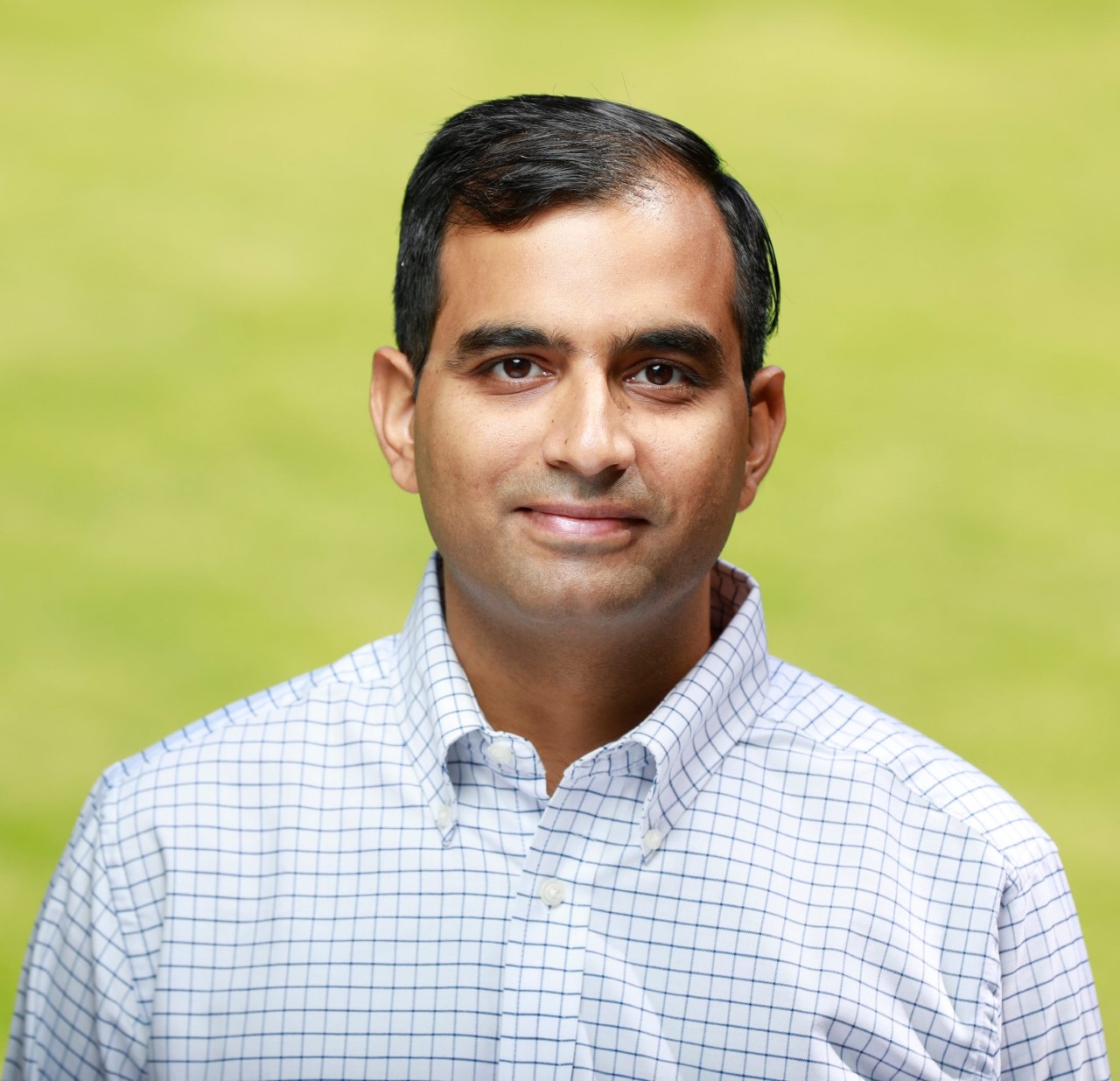
Vaibhav Katewa is an Assistant Professor in the Department of Electrical Communication Engineering and an associate faculty member of the Robert Bosch Center for Cyber Physical Systems at the Indian Institute of Science, Bangalore. He was a Postdoctoral Scholar in the department of Mechanical Engineering at the University of California, Riverside from 2017-2019. He received his M.S. and Ph.D. degrees from the University of Notre Dame in 2012 and 2016, and B.Tech. degree from IIT Kanpur in 2007, all in Electrical Engineering.
His broad research interests are in the analysis and design of dynamical systems and networks using tools from control theory, optimization, communication theory and network science. Specific areas of interest include security and privacy for cyber-physical systems, sparse feedback control design, distributed detection, estimation and control, networked control systems and robust control.
Abstract: Despite the widespread use of learning and data-driven algorithms to solve problems of technological, economic, and social relevance, provable guarantees on the performance of these algorithms are critically lacking, especially when the data originates from unreliable sources and is transmitted over unprotected and easily accessible channels. Moreover, there is a lack of understanding regarding the fundamental limitations associated with these algorithms.
In this talk, we will show that in their quest to optimize accuracy, these algorithms inevitably become less robust to adversarial manipulations of the data. We focus on two simple, yet fundamental problems in control - Binary Classification and Linear Estimation. This trade-off between accuracy and robustness is fundamental to the algorithms and cannot be improved by tuning or increasing the complexity of these algorithms.
Prof. Madhu Bhaskaran co-leads the Functional Materials and Microsystems Research Group at RMIT University. She has won numerous awards and fellowships for her research including medals from leading Australian Academies and was also named as Australia’s Most Innovative Engineers by Engineers Australia as well on the MIT Technology Review Top 10 Technology Innovators under 35 in Asia. The discoveries made at micro/nano-scales by the research group are transformed into prototypes often in partnership with industry. Her work seeks to transform conventional hard electronics into soft and unbreakable products, thin enough to create electronic skin.
Abstract: The presentation will focus on stretchable and wearable electronics which represents a new wave in devices which can bend, flex, and stretch. Overcoming the challenges of integrating high-temperature-processed oxide thin films and polymer materials creates new opportunities in highly functional wearable sensors. We realise thin electronic patches that adhere to the skin that can mimic body functionality, measure and diagnose, monitoring environment around, on, and within us. Industry and end-user benefit underpin all our activities and industry-partnered case studies for aged-care monitoring and early intervention for diseases with biomarker sensing are presented.
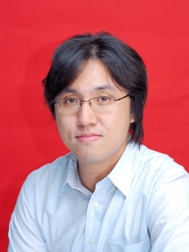
Wing-Kin Ma received the B.Eng. degree in electrical and electronic engineering from the University of Portsmouth, Portsmouth, U.K., in 1995, and the M.Phil. and Ph.D. degrees, both in electronic engineering from The Chinese University of Hong Kong (CUHK), Hong Kong, in 1997 and 2001, respectively. He is currently a Professor with the Department of Electronic Engineering, Chinese University of Hong Kong (CUHK), Hong Kong. His research interests include signal processing, optimization, and communications. He is currently interested in optimization and statistical aspects with structured matrix factorization, with application to remote sensing and data science, as well as in coarsely quantized MIMO transceiver designs.
He has rich experience in editorial service, for example, as an Associate Editor, and then later, as a Senior Area Editor, and then since 2021, as the Editor-in-Chief, of the IEEE Transactions on Signal Processing, a Guest Editor or a Lead Guest Editor of three Special Issues in the IEEE Signal Processing Magazine, and many others. He was a Tutorial Speaker at EUSIPCO 2011 and ICASSP 2014. He was the recipient of the Research Excellence Award 2013–2014 by CUHK, the 2015 IEEE Signal Processing Magazine Best Paper Award, the 2016 IEEE Signal Processing Letters Best Paper Award, and the 2018 IEEE Signal Processing Society (SPS) Best Paper Award. He was a Member of the Signal Processing for Communications and Networking Technical Committee (SPCOM-TC) and Signal Processing Theory and Methods Technical Committee (SPTM-TC), an IEEE SPS Distinguished Lecturer from 2018 to 2019, and currently the SPS Regional Director-at-Large, Region 10.
Abstract:Multiple-input multiple-output (MIMO) detection is a classical problem that has continued to receive attention for several decades. The problem starts with an unsuspiciously simple formulation, and turns out to be very challenging if some best performing approaches, such as maximum likelihood, are sought. These challenges have aroused intense interest from researchers in different areas, such as optimization, statistics, computer science, etc., to participate. Most recently, the application of deep learning to MIMO detection through the deep unfolding concept has been the new spotlight. The idea, simply speaking, is to take good structures from model-based signal processing---what we “SPers” are traditionally good at---to build structured and highly efficient deep nets. In this talk the speaker will present one such example as his team’s latest research. The story begins with introducing a novel non-convex optimization method, called homotopy optimization, for the maximum-likelihood MIMO detection problem. It works by gradually increasing the problem difficulty, from easy to hard, so that, intuitively, we may stand a better chance in avoiding poor local minima. We will then show how this non-convex method can be turned to a deep net via deep unfolding. This approach applies to both the classical MIMO detection problem and the more recently arising one-bit MIMO detection problem. The efficacy of the proposed methods will be illustrated by numerical results.

Kaushik Sengupta received the B.Tech. and M.Tech. degrees in electronics and electrical communication engineering from IIT Kharagpur, Kharagpur, India, in 2007, and the M.S. and Ph.D. degrees in electrical engineering from the California Institute of Technology (Caltech), Pasadena, CA, USA, in 2008 and 2012, respectively. In 2013, he joined the Department of Electrical Engineering, Princeton University, Princeton, NJ, USA, as a Faculty Member. His current research interests include high-frequency ICs, electromagnetics, and optics for various applications in sensing, imaging, and high-speed communication. Dr. Sengupta received the Bell Labs Prize (2017), Young Investigator Program (YIP) Award from the Office of Naval Research in 2017, the DARPA Young Faculty Award (2018) E. Lawrence Keys, Jr./Emerson Electric Co. Junior Faculty Award and the 2015 IEEE MTT-S Microwave Prize. He serves on the Steering committee in IEEE IMS, in the Technical Program Committee of IEEE CIC, member of the MTT-4 Committee on Terahertz technology, and has served as a Guest Editor of IEEE Journal of Solid-State Circuits. He has served as Distinguished Lecturer for IEEE Solid-State Circuits Society from 2019-2020, and is currently serving as Distinguished Lecturer for IEEE Microwave Theory and Techniques society from 2021-2023. He is the recipient of the Outstanding Young Engineer Award from the IEEE Microwave Theory and Techniques society in 2021.
Abstract: The last decade has seen tremendous advances in THz science and technology across wide range of substrates from solid-state and photonic devices to 2D and nano-materials. In spite of the progress, the field can greatly benefit from low-cost, integrated, room-temperature technology that can potentially bring transformative changes for a wide range of applications in sensing, imaging and communications, not currently accessible due to cost, size and power limitations. Silicon-based integrated circuit technology with its extremely high levels of integration provides a potential platform, but conventional design methodologies need to be re-explored for efficient THz chip-scale systems. It can be argued that both the ‘THz gap’ and the ‘technology and applications gap’ is closing in meaningful ways in the THz range. Technologies beyond 100 GHz focusing on sensing, imaging and wireless back-haul links are getting attractive as we enter into a new area of highly dense network of autonomous systems requiring ultra-high speed and reliable links.
In order to move beyond this inflection point as Moore’s law continue to slow, I will discuss why we need to look beyond the classical ‘device’-level metrics of efficiency and sensitivity of THz sources and detectors towards holistic ‘system’ level properties such as scalability and programmability. Such properties are critically important for applications in sensing and imaging, as evidenced across sensor fusion technologies across mmWave, IR and optical frequencies. The ultimate programmability in THz sources and sensors is one that can synthesize or receive THz fields with arbitrary configuration and spectrum. In this talk, I will highlight approaches that cut across electromagnetics, circuits, systems and signal processing, to allow for such reconfigurability in THz signal synthesis and sensing, yet realized with devices that are themselves not very efficient. Particularly, we will demonstrate approaches to THz CMOS sensors reconfigurable across the three field properties of spectrum (100 GHz-1000 GHz), beam pattern and polarization, programmable THz metasurfaces with CMOS tiling, and enabling dynamic spectrum shaping and physically secure sub-THz links. In the end, I will comment on what could be the major directions for the field in the coming decade.
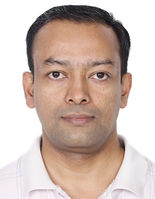
Professor Bharadwaj Amrutur is a faculty in IISc at the ECE department and RBCCPS. He heads the AI and Robotics Technologies Park, commonly known as ARTPARK - the initiative between AI Foundry and IISc aimed at bringing up innovative start ups in the Robotics and Autonomous Systems. He completed BTech in Computer Science from IIT Bombay, following which he pursued MS and PhD in Electrical Engineering from Stanford University. Prior to starting his career as an academician in IISc Bangalore he was exposed to Networking ASIC design industry for a brief period. He is also a recipient of the Satish Dhawan Young Engineer Award, Fellowship from Indian National Academy of Engineering and Abdul Kalam Technology Innovation.
Abstract: Remote controlled toys have always been a staple for many a kid. Confluence of 5G, AI, Robotics and this Pandemic, will push this technology into mainstream, to enable us to carry out many more physical tasks, remotely. In this talk, we will explore the challenges in achieving this vision – with some examples from some of our recent work with Asha – a remotely controlled humanoid.
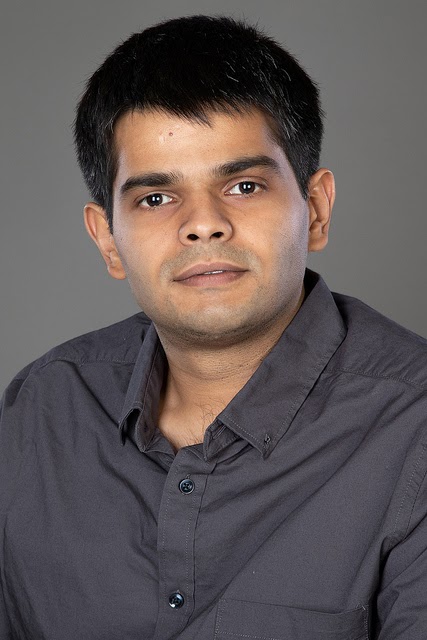
Rahul Singh is an Assistant Professor at the department of ECE IISc. Earlier, he has been a postdoctoral researcher at the Ohio State University and LIDS, MIT. He received B.Tech. in EE from the Indian Institute of Technology Kanpur in 2009, M.S. in EE from the University of Notre Dame in 2011, and Ph.D. in Computer Engineering from the Department of Electrical and Computer Engineering, Texas A&M University, College Station, in 2015. He has also worked in the industry as a Data Scientist at Encored Inc., and in the Machine Learning Group at Intel, Santa Clara. His research interests include stochastic control, machine learning, Markov decision processes and networks.
Abstract: We revisit the Reward Biased Maximum Likelihood Estimate (RBMLE) algorithm that was proposed in (Kumar and Becker, 1982) to solve the problem of adaptive control (Bellman 1961, Feldbaum, 1960). It solved the "exploration vs. exploitation problem” by employing a bias in favor of parameters with larger optimal rewards, thereby introducing the principle of optimism in the face of uncertainty. Modern attention is focused on the much finer notion of “learning regret” (Lai and Robbins, 1985). We show that RBMLE has a regret of O(logT) over a time horizon of T steps, similar to state-of-the-art algorithms. Simulation studies show that RBMLE outperforms other algorithms such as UCRL2 (Upper Confidence Bound) and Thompson Sampling.
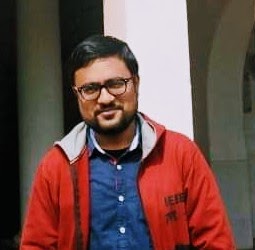
Dr. Debdeep Sarkar is an Assistant Professor in Deptartment of Electrical Communication Engineering (ECE), Indian Institute of Science (IISc), Bangalore. He received his B.E. in ETCE from Jadavpur University (2011), and M.Tech. and Ph.D. from Indian Institute of Technology, Kanpur in 2013 and 2018 respectively. He has worked as visiting researcher and post-doctoral fellow in Royal Military College, Canada in May-August 2017 and Nov 2018-Feb 2020 respectively. Dr. Debdeep has authored/co-authored more than 30 peer-reviewed journal papers so far. Dr. Debdeep serves as reviewer in several prestigious journals like IEEE Transactions on Antennas and Propagation, IEEE Transactions on Microwave Theory and Techniques, IEEE Transactions on Vehicular Technology, IEEE Antennas and Wireless Propagation Letters, IEEE Antennas and Propagation Magazine, etc. Dr. Debdeep is also currently serving as Associate Editor in IEEE Access and IET Microwaves, Antennas and Propagation. Dr. Debdeep is the recipient of the URSI Young Scientist Award (YSA) twice (in the APRASC 2019 and URSIGASS 2020), along with best paper awards and grants from several conferences. He has also been selected for the prestigious position of ‘Infosys Young Investigator’, by Infosys Foundation, Bangalore. He is currently an IEEE Antennas and Propagation Society Young Professionals (YP) Committee member, and Vice-Chair in the IEEE YP Affinity Group, Bangalore section.
Abstract: The importance of time-varying media (temporal photonic crystals or metamaterials) in new exotic applications, that involve rich EM phenomena (parametric amplification, frequency conversion, non-reciprocal gain, electromagnetic energy accumulation, temporal coating and temporal aiming) will be highlighted in this talk. Starting from a historical perspective, the utility of computational electromagnetic tools like FDTD in analysis of such temporal metamaterials will be presented. Also, the experimental realization aspects of such temporal metamaterials in microwave and mm-wave systems will be touched upon.


